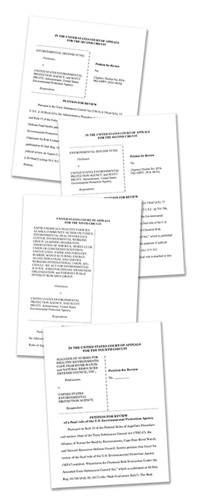Advertisement
Grab your lab coat. Let's get started
Welcome!
Welcome!
Create an account below to get 6 C&EN articles per month, receive newsletters and more - all free.
It seems this is your first time logging in online. Please enter the following information to continue.
As an ACS member you automatically get access to this site. All we need is few more details to create your reading experience.
Not you? Sign in with a different account.
Not you? Sign in with a different account.
ERROR 1
ERROR 1
ERROR 2
ERROR 2
ERROR 2
ERROR 2
ERROR 2
Password and Confirm password must match.
If you have an ACS member number, please enter it here so we can link this account to your membership. (optional)
ERROR 2
ACS values your privacy. By submitting your information, you are gaining access to C&EN and subscribing to our weekly newsletter. We use the information you provide to make your reading experience better, and we will never sell your data to third party members.
Policy
Timely Handling of a Slew of Data
Advisers recommend plan for EPA to rank submissions on high-production-volume chemicals
by CHERYL HOGUE, C&EN WASHINGTON
February 28, 2005
| A version of this story appeared in
Volume 83, Issue 9

The Environmental Protection Agency's chemical regulation program will soon receive a torrent of physical and environmental data on hundreds of substances. This inflow of information about the basic physical properties, toxicity, and persistence of hundreds of compounds is not unexpected--and the agency wants it. Chemical makers are submitting the data voluntarily so that EPA has a way to assess the relative safety of thousands of high-production-volume (HPV) substances that are manufactured or imported in the U.S. at volumes of at least 1 million lb per year.
EPA is faced with the task of putting these myriad submissions in some sort of logical order before it begins reviewing them. The agency's goal is to first assess the data on chemicals that might pose a health or environmental hazard, then review the information on lower priority substances later.
In preparation for the slew of HPV submissions, the agency turned to an advisory group for suggestions on handling the data. In mid-February, after many months of deliberations, the National Pollution Prevention & Toxics Advisory Committee (NPPTAC) recommended a way for EPA to prioritize submissions for assessment.
Launched in 1998, the HPV Challenge Program began through the joint work of EPA, the environmental group Environmental Defense, and the American Chemistry Council, an industry association. As of December 2004, chemical makers had pledged to provide basic data for 2,222 substances. Data submissions on nearly 1,400 of these chemicals are expected to arrive at EPA by early 2006. Some of the HPV information is already in the agency's hands and has been posted on the Web (C&EN, Dec. 13, 2004, page 23).
Data on about 850 other HPV chemicals covered by the U.S. program are being produced through the International Council of Chemical Associations' HPV Initiative. That effort, also voluntary, is providing the information to the Organization for Economic Cooperation & Development (OECD), a bloc of 30 of the world's most industrialized countries. Meanwhile, the final 350 HPV substances covered by the U.S. program remain without sponsors, and EPA is considering regulations that will force producers to generate the required data for these compounds.
In its recommendations, NPPTAC set a goal for the agency to finish assessing the 1,400 chemicals due next year in the domestic HPV Challenge Program in four years. Chemicals flagged for attention first--because of possible toxicity or environmental persistence--would go through the assessment within the first two of those four years.
NPPTAC recommended a detailed plan that would allow EPA to sort submissions on HPV chemicals into three classes. Chemicals with data indicating toxicity or persistence in the environment would be placed in the highest priority class and would be the first group assessed by EPA. Chemicals with information suggesting low toxicity or persistence would go into a second class for later review, while those with extremely low or no toxicity and persistence would be reviewed last.
The advisory committee stressed that just because a chemical gets sorted into the class of submissions that EPA will assess first does not render "a final judgment of hazard or risks, if any" from that substance.
During those data assessments, EPA will decide whether it requires more data on an HPV chemical or whether no more information on the substance is currently needed.
Steven K. Russell, assistant general counsel at ACC and a member of the advisory group, says the NPPTAC plan "helps guarantee that information is reviewed and assessed in a timely manner." This is important to the chemical manufacturers that have invested time and money in the HPV effort, he tells C&EN.
If EPA takes too long to examine the data, it may make industry less willing to participate in any future voluntary efforts sought by the agency, says Jessine A. Monaghan, manager and counsel for regulatory programs at GE Advanced Materials. She, too, is a member of the advisory committee.
Another NPPTAC member, Richard A. Denison, senior scientist with Environmental Defense, says some of the substances in the HPV Challenge Program will trigger further action by EPA. Through the assessment process, the agency will identify chemicals for which it will ask manufacturers to provide additional data, such as exposure information, or to conduct more toxicity or environmental fate tests.
IN ADDITION, the agency could add some of the HPV compounds to the Toxics Release Inventory, Denison tells C&EN. Such a move would require facilities with releases of a listed HPV chemical to air, water, or land to file annual reports to the agency.
Charles M. Auer, director of EPA's Office of Pollution Prevention & Toxics, told NPPTAC members on Feb. 8 that their advice should allow the agency to rank the submissions into "a manageable set" for assessment. The agency will work as quickly as it can on the reviews, he added. Auer said the agency believes that it can assess all the HPV data submissions within the four-year period.
NPPTAC also provided advice to the agency on assessing the data for chemicals placed in a category because they have structural or other common attributes.
"Under the category approach, groups of chemicals thought to be structurally similar and to share similar chemical properties, or for which chemical properties are thought to vary in a predictable pattern based on chemical structure, are considered together," the advisers explain in their recommendations to EPA.
PLACING SEVERAL compounds into a category allows the testing company to use results from studies on two or more chemicals of the category to estimate physical properties, toxicity, and environmental fate values for related chemicals. This greatly reduces the use of laboratory animals and cuts testing costs. Nearly 80% of the HPV Challenge Program chemicals were tested as part of a category.
But the use of categories in the U.S. and OECD programs has raised concern that some chemicals lumped together don't have closely linked toxicity or physical properties. Industry sponsors of chemical tests are supposed to propose a rationale for a category before testing begins, as part of a document called a test plan. After their research is completed, the sponsors are to provide, as part of their data submission to EPA, an analysis of how well their category hypothesis held together.
As EPA scrutinizes the categories created by HPV Challenge Program sponsors, the advisory committee says, the agency needs to remain aware of a number of factors. In their final data submissions, sponsors should state any changes from their test plans in the justification for a category. They should explain thoroughly how they calculated toxicity, physical, or persistence values for each substance that was not actually tested. And for each substance, sponsors should provide a value for every toxicity, physical, or environmental persistence end point in the "matrix" of data that is the heart of their final submission, NPPTAC says.
Auer says the agency already expects test sponsors to provide a numerical value for each cell of the data matrix for a category of chemicals.
Meanwhile, some NPPTAC members expressed concern about cuts to the HPV program proposed in President George W. Bush's budget request for 2006. The budget proposal would chop the agency's funding for HPV work from the $11.67 million requested in 2005 to $8.75 million proposed for 2006.
A large chunk of this reduction, some $2.2 million, reflects the completion in 2005 of the HPV Information System for making the chemical data public and the new efficiencies in EPA information services support, according to budget documents. But $850,000 of the proposed cut would come from HPV data- screening efforts.
According to budget documents, the reduction "will not affect EPA's progress in making [HPV] data available to the public."
In its recommendations, NPPTAC urged the agency to commit sufficient financial and staff resources to the HPV program so the data assessment can take place in a timely fashion.






Join the conversation
Contact the reporter
Submit a Letter to the Editor for publication
Engage with us on Twitter